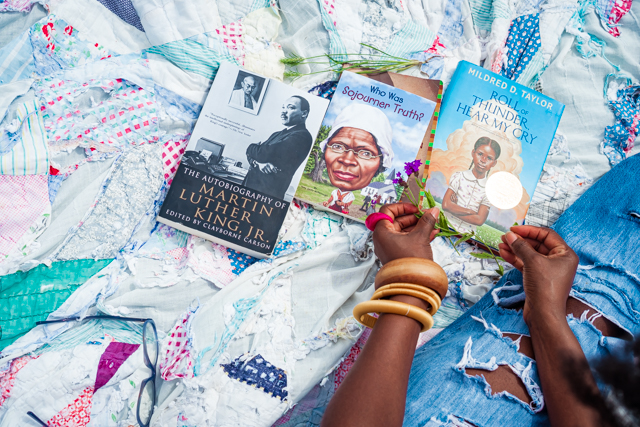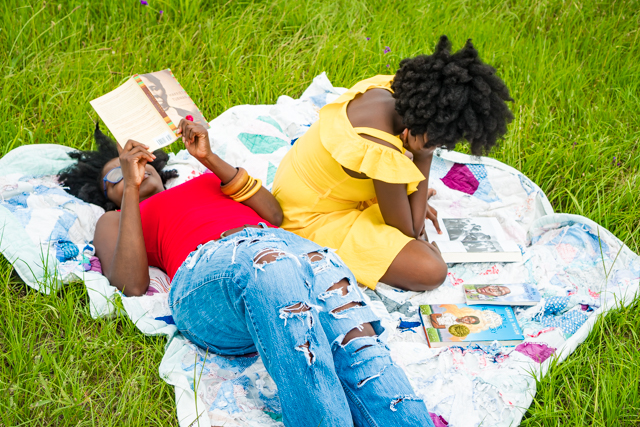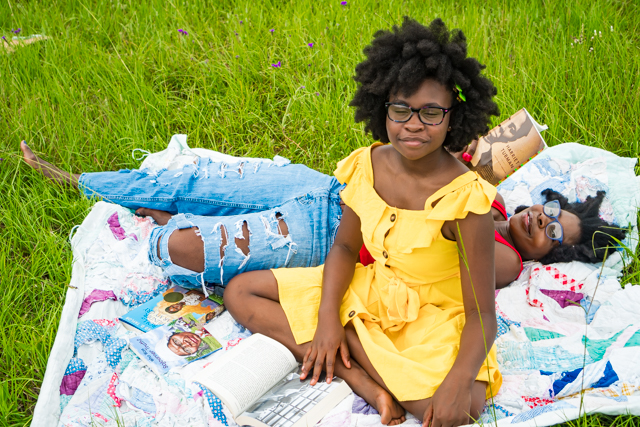The atmosphere in the USA these past few weeks have been very intense. If the pandemic was not already changing how we live, our country erupted into a heated war against injustice toward African Americans.

I know you all are feeling the tension and can attest to how emotionally draining and overwhelming the energy here is. In fact, the murder of George Floyd by Minnesota police officers and the more recent shooting of Rayshard Brooks has stirred global outrage.
Kids mimic their parents
We have to talk about racism to our children. They need to understand how this topic affects them. They also need to hear from you where you stand so they can know where to stand on the topic of racism.
One day my daughter said, “I am so glad school is out while this is happening”. Of course, I wanted to know why. She explained how she already gets awkward questions from a particular classmate and she is glad she does not have to respond to questions she feels the class should know the answers to. When I ran this by one of my friends who is black, she chimed in that her daughter said the exact same thing.
Kids won’t know if parents don’t help them learn.


Why we have to talk about this
Since black history is skimmed over in schools, the knowledge gap is widening on the topic of racism in America. Our Generations are becoming more and more clueless about this part of America’s history which is a problem.
Our children and younger adults no longer understand why or when racism entered our borders.
Unfortunately when African Americans don’t know their history they can’t help white Americans or anyone else understand their deep rooted pain and frustration. Especially when police brutality and racial injustice still plagues our nation today.
If white Americans don’t know black history, they will never be able to be sympathetic with black Americans or even began to know why their outrage and protest is valid. Neither will they be able to stop the cycle of inflicting racial injustice.
We are one nation of people being divided by an ignorant mindset that the color of your skin reduces your value as a human being.
Now let’s get into how to teach our kids about racism.
1. Control your emotions
Like so many other parents, I find that teaching my daughter about race and equality is not an easy topic and it is sad to talk about.
When I sat down with my daughter to explain George Floyd’s murder, I was overcome with grief and even shame that such a demeaning act was committed against a grown man that looked like all the men in my family.
It’s important to have your emotions under wraps before you have this chat with your child. That includes crying. Children easily pick up on tension in general. You want them to get a clear understanding of inequality before diving in emotionally. So take some time away from the news or conversations judging the situation before you talk if the news gets you worked up.
2. Protect their confidence
I slowly described the situation to my daughter to keep my hurt from instantly blossoming into hate. I had to make sure she not only understood the situation but that she remained confident and felt loved regardless of what was happening. I needed her to be crystal clear that injustice did not define her worth.
Here is my discussion outline:
- Explained the incident that involved George Floyd along with other recent murders and why there were immediate protesting and rioting.
- Made it clear that inequality for any reason is wrong, in particular racism.
- Affirmed her as a stunning child of color and reiterate that if God wanted us all to look the same he would not have made us so beautifully unique.
- Pointed out that as with slavery and the civil rights movement, we can’t fight this battle alone.


3. Start with the civil rights movement
If you are not African American and unsure about how to explain racist inequality to your child, I recommend starting with the civil rights movement. It’s almost identical to what’s currently happening now and the outcome of that fight proves the power of love and peaceful demonstrations.
4. Study black history personalities
Once you lock down a good understanding of the civil rights movement, reading about individual black history personalities can provide more exciting information on brilliant black men and women who changed the world.
When my daughter learned to read, I could stick an age-appropriate black history book into her hands and let her run with it. She soaked up everything she read like a sponge as she learned about amazing black activists. She also discovered the Who Was book collections which are appropriate for ages 8-12. A good idea is to start at your local library or bookstore and start discovering. Black history museums are also great ways to get to know a variety of different individuals who played various parts in the fight against injustice.
5. Watch age-appropriate black history movies and documentaries
Depending on your child’s age, you can find documentaries and “based on a true story” movies that will help depict the fight against racial injustice. Movies help demonstrate the conflict and how the situation really played out. Here are a few of my favorites for ages 6 to 12 years old.
- An American Girl Story Melody- 1963
- The Watson’s Go to Birmingham
- Harriet Tubman
- My Friend Martin
- Hidden Figures
- The Help

Going Forward
This is not a one-time discussion you should have with your children. Let the topic of racism not only be an open door discussion but proactively include black history as a part of your children’s education plan. In fact, you will learn a boatload of interesting facts that will literally shock you (in a good way). When you stop at a traffic light, need a blood transfusion, or use some basic household items you are experiencing black history that changed our day to day lives. Because a group of people in impossible situations made America great regardless and impacted the world.

P.S. Share this post with as many people that you feel it will help. Because knowledge is power and knowledge is freedom!


